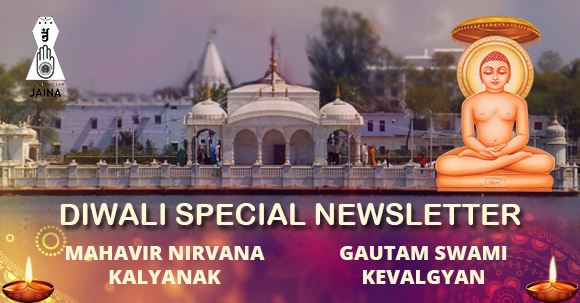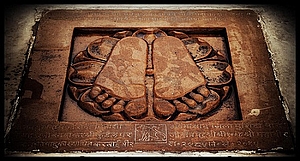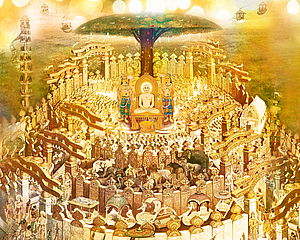
Federation Of Jain Associations in North America
 | ||
| ||
Jai Jinendra! | ||
| ||
| ||
Bhagwan Mahavira Nirvana Divas, also known as Bhagwan Mahavir’s Nirvan Kalyanak Divas. On this day Lord Mahavira, the 24th Jain Tirthankara had attained the bliss of Nirvana on the dawn of Amavasya of the Ashwin month (Hindu calendar), 527 B.C. at Pavapuri. It was a very dark night without the light of the Gods or the moon. So, the sixteen Gana kings, nine Malla and nine Lichchhavi of Kasi and Kosal decided, that the light of their master’s knowledge should be kept alive symbolically by lighting the lamps. | ||
| ||
| ||
| ||
Bhagwan Mahavir knowing his emancipation was very near, reached Pavapuri alias Apapa town. The Heavenly Gods created Samosaran (beautiful dome). Bhagwan Mahavir sat on golden throne inside Samosaran. There were twelve beautiful qualities that surrounded him. It was Kali Chaudash. His principal eleven disciples were present including Gautamswami. Heavenly gods and goddesses too were present. He had royal patronage too were present. Rich financiers and merchants, kings, queens and princes and their ministers were followers of Mahavir. Some of them were present to witness the last moments and last discourses of Mahavir. | ||
| ||
| ||
| ||
And besides all this, lot of money is wasted. If the same money is utilized in things such as benevolence, charity, helping in every possible way to all living-beings it would be meritorious. | ||
| ||
The Jain year commences with pratipada, following Diwali. Jain entrepreneurs launch their accounting year from Diwali. Diwali illuminates the temple of heart and reveals the horizon of the inner heart. Jain scriptures also mention that one of the ardent disciples of Mahavir, Gandhara Gautam Swami attained enlightenment on this day. In Mahavir's,departure he meditated to such an extent that his soul became liberated from all karma. |



